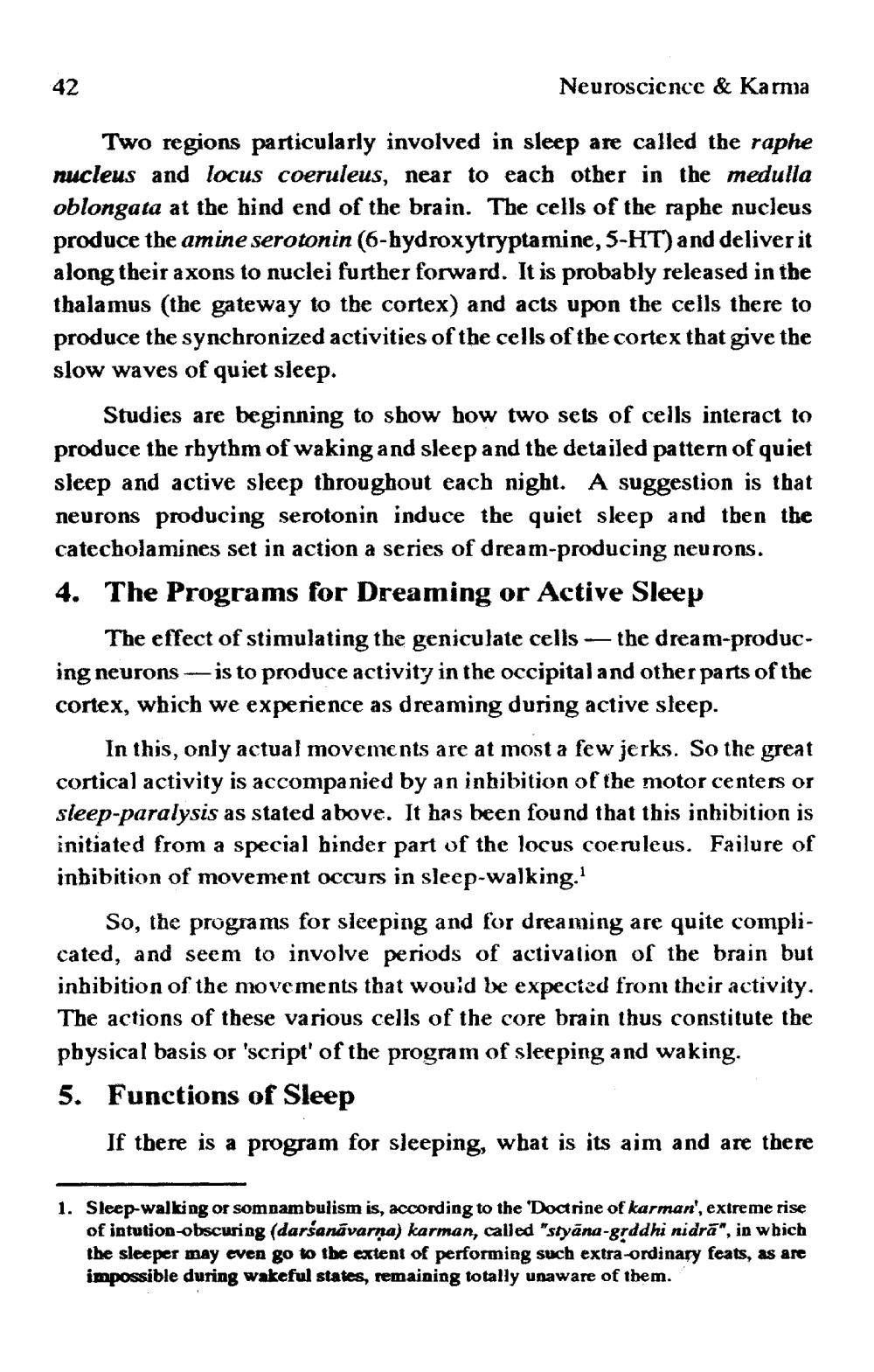________________
42
Neuroscience & Karnia
Two regions particularly involved in sleep are called the raphe nucleus and locus coeruleus, near to each other in the medulla oblongata at the hind end of the brain. The cells of the raphe nucleus produce the amine serotonin (6-hydroxytryptamine, 5-HT) and deliver it along their axons to nuclei further forward. It is probably released in the thalamus (the gateway to the cortex) and acts upon the cells there to produce the synchronized activities of the cells of the cortex that give the slow waves of quiet sleep.
Studies are beginning to show how two sets of cells interact to produce the rhythm of waking and sleep and the detailed pattern of quiet sleep and active sleep throughout each night. A suggestion is that neurons producing serotonin induce the quiet sleep and then the catecholamines set in action a series of dream-producing neurons. 4. The Programs for Dreaming or Active Sleep
The effect of stimulating the geniculate cells -- the dream-producing neurons -- is to produce activity in the occipital and other parts of the cortex, which we experience as dreaming during active sleep.
In this, only actual movements are at most a few jerks. So the great cortical activity is accompanied by an inhibition of the motor centers or sleep-paralysis as stated above. It has been found that this inhibition is initiated from a special hinder part of the locus coeruleus. Failure of inbibition of movement occurs in sleep-walking.'
So, the programs for sleeping and for dreaming are quite complicated, and seem to involve periods of activation of the brain but inhibition of the movements that would be expected from their activity. The actions of these various cells of the core brain thus constitute the physical basis or 'script' of the program of sleeping and waking. 5. Functions of Sleep
If there is a program for sleeping, what is its aim and are there
1. Sleep-walking or somnambulism is, according to the 'Doctrine of karman', extreme rise
of intution obscuring (darsanăvarna) karman, called "styāna-grddhi nidrā", in which the sleeper may even go to the extent of performing such extra-ordinary feats, as are impossible during wakeful states, remaining totally unaware of them.




